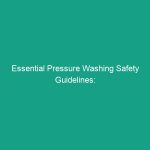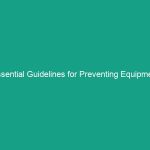Essential Presenteeism Guidelines: Avoid Critical Workplace Risks
Introduction
Good morning team! Today, we’re going to have an important Toolbox Talk on a topic that affects us all: presenteeism in the workplace. As we dive into this discussion, we’ll explore essential presenteeism guidelines and how they can help us avoid critical workplace risks. Understanding and addressing presenteeism is vital as it can significantly impact our health, safety, and overall productivity.
Understanding Presenteeism
So, what exactly is presenteeism? Presenteeism refers to the phenomenon of employees coming to work while they are ill, stressed, or otherwise unfit to perform their duties effectively. This issue is often overlooked, but it can lead to reduced productivity, increased mistakes, and even workplace accidents.
Many employees may feel pressured to come to work despite feeling unwell, believing that their absence will burden their colleagues or that they will be judged for taking a sick day. This misconception can lead to hazardous situations. It’s crucial to recognize that staying home when unwell is not only beneficial for the individual but also for the entire team.
Key Hazards, Risks, and Safety Considerations
Presenteeism can introduce several Hazards and risks within the workplace Environment:
- Increased Risk of Accidents: Employees who are not at their best may struggle to focus, leading to lapses in Safety protocols and increasing the likelihood of accidents.
- Spread of Illness: When employees come to work while sick, they risk spreading contagious illnesses to their colleagues, which can lead to widespread absenteeism.
- Decreased Morale: A culture that encourages presenteeism can create an atmosphere of stress and anxiety, leading to decreased employee morale and job satisfaction.
Ignoring these risks can have real-world consequences, such as workplace injuries or decreased productivity, ultimately affecting our bottom line. It’s essential to address presenteeism proactively.
Best Practices, Procedures, & Actionable Advice
To mitigate the risks associated with presenteeism, here are some Best Practices and Procedures to follow:
- Encourage Open Communication: Create an environment where employees feel comfortable discussing their health and well-being without fear of stigma. Regular check-ins can help identify those who may be struggling.
- Implement Flexible Work Policies: Consider flexible work arrangements, such as remote work options or flexible hours, to support employees who may need to work from home when unwell.
- Promote a Healthy Workplace Culture: Encourage wellness programs that focus on mental and physical health, such as stress management workshops, exercise classes, or health screenings.
A real-world example of the consequences of presenteeism occurred at a manufacturing facility where an employee, feeling unwell, operated machinery. This resulted in an accident that caused injury not only to themselves but also to a colleague. The company later implemented mandatory wellness checks and re-evaluated their health policies, leading to a significant reduction in workplace incidents.
Regulations, Standards, and Compliance
It’s essential to be aware of Regulations and Standards related to Workplace Health and safety. Organizations like OSHA provide guidelines on maintaining a healthy work environment. Compliance with these regulations is critical as it not only ensures employee safety but also protects the company from legal repercussions.
By adhering to these standards, we can create a safer workplace that prioritizes health and well-being. Remember, safety isn’t just a policy; it’s a shared responsibility.
Employee Engagement & Discussion
Let’s take a moment to reflect. What safety challenges have you encountered related to presenteeism in our workplace? Have you ever felt pressured to come to work when you weren’t feeling well? Your insights are invaluable as we work together to create a safer environment for everyone.
Conclusion & Key Takeaways
In conclusion, understanding presenteeism and implementing essential guidelines can significantly reduce workplace risks. Remember the importance of open communication, flexible work policies, and promoting a healthy workplace culture. By prioritizing our health and well-being, we not only protect ourselves but also our colleagues and the overall productivity of our team.
Thank you for your attention today! Let’s commit to prioritizing safety and health in our workplace. Together, we can create a safer, healthier environment.


